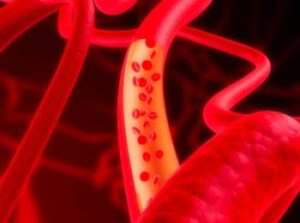Researchers at 23andMe, Sweden’s Karlolinska Institute, and the University of Geneva Medical School have identified new genetic associations for blood clots, one of the leading causes of death worldwide.

On top of finding these genetic associations, this new paper also offered a model for conducting future research into this difficult-to-study condition by using self-reported data from 23andMe research participants answering questions about their own history of blood clots.
“Using these datasets for research is becoming one of the most powerful tools for the discovery of common variants for a wide range of disease-related phenotypes,” according to the paper, published earlier this year in the journal Human Molecular Genetics.
Venous Thromboembolism
Blood clots or venous thromboembolism, which include both deep-vein thrombosis and pulmonary embolisms, are relatively common, but studying them has been difficult. This is in part because it is hard to gather enough individuals who have clots to adequately power research. In the past scientists depended on patients who’d been identified through clinical diagnosis of having clots. This limited the numbers of individuals who could be included in studies and underpowered research into this complex disease that has both environmental and genetic influences.
As a result, previous research tended to depend on what are called meta-analyses, essentially pooling data from several different studies to make findings.
For this genome-wide association study, researchers gathered data from more than 250,000 23andMe customers who consented to participate in research and are of European ancestry, including over 6,000 individuals who’d had blood clots.
Genetic Associations with Blood Clots
The researchers found eight genetic variants strongly associated with the condition. Seven of the variants identified have been found in previous studies – in or near the genes F5, FGA-FGG, F11, F2, PROCR, ABO, and SLC44A2 – which is an important validation that the self-reported data gives results consistent with those studies. One association is entirely new, according to researchers. The newly found variant – – is near the gene F8, which has a known role in blood coagulation.
In addition, this study found for the first time shared genetic risk between blood clotting and the risk for stroke and coronary artery disease. This adds a new dimension to what researchers are learning about the biology of the disease. While many of the variants identified are located in genes that regulate blood coagulation or lipid levels, the researchers said their data point to changes in a gene (TFPI) involved in the regulation of and expression of endothelial cells, which line the interior surface of both blood and lymphatic vessels in the body. The study also found that one of the genetic associations with blood clotting was also associated with increased height.
Together, all these findings suggest that by pooling additional data from self-reported genetic studies, researchers could create a larger and more powerful study that could shed additional light on some of these associations and their related biology, according to the study authors.